Can you see those luscious pink-edged, big shrimp curled in the middle of this dish? I should have done a bit more primping and fussing with the food, moving rice kernels over, positioning the cashews and the cilantro, moving the long strand of caramelized onion to be more visible for the photos. But I didn’t. It was hot and ready to be whisked to the table before the food got cold.
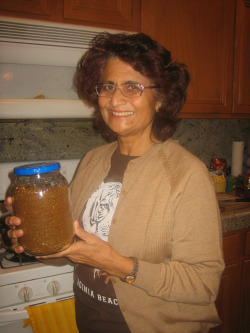 The credit for this recipe goes to my friend, Kunda S., a native of India. Among other accomplishments, she’s also a PhD microbiologist that I met in one of my art classes some years ago. We’ve become friends, sharing lunches occasionally. Kunda and her husband Sunat (he’s a PhD physicist) came over for dinner recently, to share some travel information with friends of ours who are venturing to India and Bhutan in January and welcomed any helpful hints about travel in northern India. We had a wonderful evening with them.
The credit for this recipe goes to my friend, Kunda S., a native of India. Among other accomplishments, she’s also a PhD microbiologist that I met in one of my art classes some years ago. We’ve become friends, sharing lunches occasionally. Kunda and her husband Sunat (he’s a PhD physicist) came over for dinner recently, to share some travel information with friends of ours who are venturing to India and Bhutan in January and welcomed any helpful hints about travel in northern India. We had a wonderful evening with them.
It was earlier this year I was at Kunda’s house and she gave me a little container of this rice dish she’d made. Knowing how much I enjoy cooking (and that we enjoy Indian food) she thought I should taste this dish. Oh yes! She also gave me a little bit of her garam masala, from her mother’s prized recipe. Kunda’s sister (who lives in India) makes it from their local spices, and each time Kunda visits home, she brings a new stash of garam masala.
So how was it? It was scrumptious. Kunda gave me the recipe, but she was hesitant for me to post it without trying it myself. So I finally got around to it the other night. I made enough to feed an army, so we had a couple of nights of leftovers too. Every bit as good as the first time around.
As Kunda explained to me, in the Indian culture, they take their rice very seriously. If you’ve ever been to a market with plenty of Indian products, you’ll notice lots of different rice types and brands. Most of them basmati, but from different areas. Some more expensive than others. And this dish, combined with an onion-coconut paste that you make, a marinade for the shrimp, soaked basmati rice and coconut milk. Oh my. Absolutely wonderful. My DH said “this is stupendous.” His words. It contains garam masala and turmeric, similar ingredients to the Bal’s No-Butter Chicken I made a couple of weeks ago. But this dish is altogether different.
This recipe does have several steps to its preparation. I managed to make it all in one pot, by removing the different sections as I made them, like the onion-coconut mixture. Same with the shrimp and onions later, also removed to another bowl to set aside. Finally I made the rice and at the end you combine everything so the flavors of the individual parts are still there without becoming a homogenous blend. The rice is rinsed 3 times, then left to soak in warm water for awhile (I did that while I made the other two parts of the recipe). So when you finally begin cooking the rice, it doesn’t take all that long – less time than usual if you were to start out with dry, unrinsed rice.
The dish also requires raw cashews. I’m sure I could find them, but didn’t have them on hand, so I used roasted cashews, and rinsed off the salt. I also didn’t have a fresh coconut, but I did have unsweetened grated dry coconut in the freezer, so used that instead. The coconut is browned, so it should have been very similar. Don’t, however, use sweetened flaked coconut in this – it would make it way too sweet. If you’re absolutely desperate, though, wash the sweetened coconut type. This is not a sweet dish, except for the natural sweetness from the coconut milk.
Similar to an Indian curry, you can serve this with condiments. I didn’t have the ingredients to make them (a coconut raita, chopped peanuts, minced cucumbers and more jalapeno), for one, didn’t want to make a trip to the market, so we made do without. But, I was perfectly content with the dish as is with just cashews and fresh cilantro on top. So, thanks Kunda, for this great recipe. I’ll be making it again. Maybe even for guests. It’s not all that hot, just mildly so. Kunda makes hers much hotter than the recipe below – she adds more cayenne. And if you want to make your own garam masala, click here for the recipe I posted recently.
printer-friendly PDF
Shrimp Khichdi
Recipe By: From my friend Kunda S.
Serving Size: 8
Serving Ideas: Kunda sometimes serves this with sauteed vegetables, like cauliflower or peas. She also may serve it with a coconut raita (yogurt, grated coconut, chopped peanuts, cucumber and finely minced jalapeno). Such meals might also include pappadums (a thin wafer/bread that is quickly cooked in hot oil just before serving). Monisha, Kunda’s daughter, prefers the khichdi with a large spoon of yogurt mixed in (to temper the heat, since her mother makes it more spicy than this recipe – she uses double the amount of cayenne).
ONION COCONUT PASTE:
1 tablespoon canola oil
1 whole onion — thinly sliced
1/4 cup coconut — grated Water to make a paste
SHRIMP MARINADE:
4 cloves garlic — peeled
1/2 inch knob fresh ginger — cut in chunks
1 whole jalapeno pepper — optional
1 tablespoon fresh cilantro — chopped
1/4 cup fresh lemon juice
SHRIMP:
1 pound small shrimp — peeled, deveined
1 medium onion — minced
1/2 teaspoon salt
1 teaspoon ground turmeric
1/4 teaspoon cayenne — or up to 1/2 tsp.
2 teaspoons garam masala — (or more to taste)
RICE:
2 cups basmati rice
1/2 cup canola oil — [I used about 3 T.]
1/2 stick cinnamon
3 whole cloves
3 whole cardamom — pods, not ground cardamom
3/4 cup light coconut milk
2 teaspoons garam masala
1/3 cup raw cashews
3 tablespoons cilantro — for garnish
ghee (clarified butter), drizzled on top, if desired
1. RICE: Rinse the dry rice at least 3 times in water. Pour into a bowl and add warm water to cover. Allow to soak while preparing other parts of the dish.
2. ONION COCONUT PASTE: In a medium skillet bring 1 T. of canola oil to a shimmer and add the sliced onion. Saute over medium to low heat until onion is caramelized. Add grated coconut and continue cooking until the coconut is golden brown. Cool mixture and add water: add just enough to make a fine paste. Pour out into a bowl and set aside.
3. SHRIMP: Rinse and dry the shrimp. Combine the shrimp with the salt, turmeric and cayenne. Combine the marinade ingredients in a blender and puree. Add the marinade to the shrimp and allow to sit at room temp for about 30 minutes.
4. In another skillet, heat 2 T. of the canola oil, then add HALF of the minced onion. Cook, stirring occasionally, until the onion is soft and translucent. Add the shrimp with the marinade and cook for about 5 minutes, turning the shrimp once. Add the garam masala and set aside.
5. CASHEWS: Soak the cashews in water, to cover, for about 30 minutes. Drain, then separate the cashews into halves, if possible before adding them to the rice (below).
6. RICE: In a 3-quart heavy saucepan heat the remaining canola oil. When hot, add cinnamon, cloves and cardamom. Immediately add the remaining HALF minced onion. Stir until the onion is soft and translucent. Add the turmeric and salt to taste. Stir, then add rice (drained of its soaking water) and drained cashews. Bring to a simmer and stir for about 3 minutes. Add about 2 1/2 cups of water, bring to a boil, then lower heat to a simmer and cook until almost all the water is absorbed (about 10-15 minutes at most). Stir in the caramelized onion paste/coconut mixture, shrimp and coconut milk, plus the additional garam masala. Cover and cook until rice is just tender. You may need to add additional water.
7. Serve immediately garnished with chopped cilantro. If you’re making an authentic khichdi, drizzle about a teaspoon of ghee on top of each serving.
8. Garnish with chopped cucumbers, chopped peanuts, minced jalapeno and a coconut raita (generally it’s made with cucumber – use coconut instead).
Per Serving: 440 Calories; 24g Fat (48.4% calories from fat); 18g Protein; 39g Carbohydrate; 1g Dietary Fiber; 86mg Cholesterol; 257mg Sodium.
A year ago: Unstuffed Sweet & Sour Cabbage (stay tuned, I made this again, and will be posting it)
Two years ago: Ina Garten’s Lemon Cake





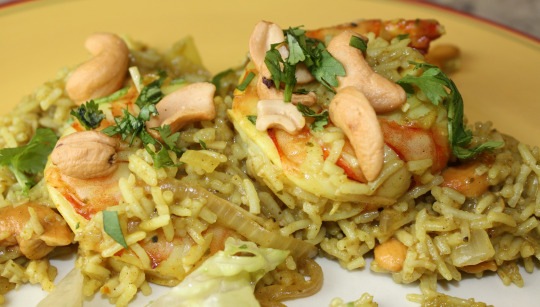

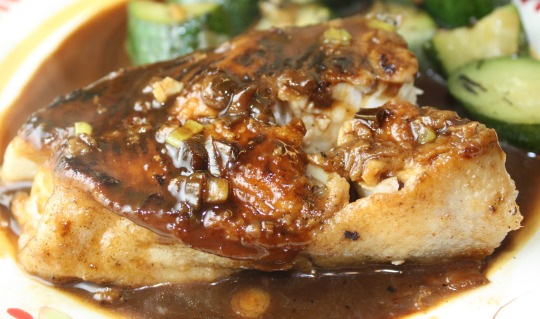
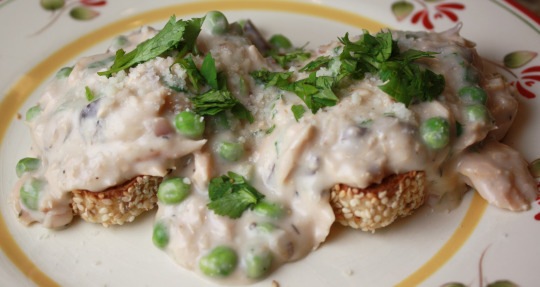
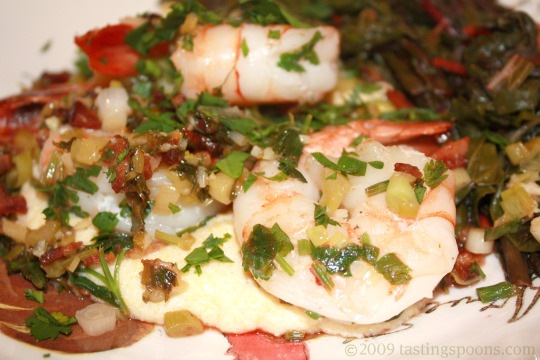
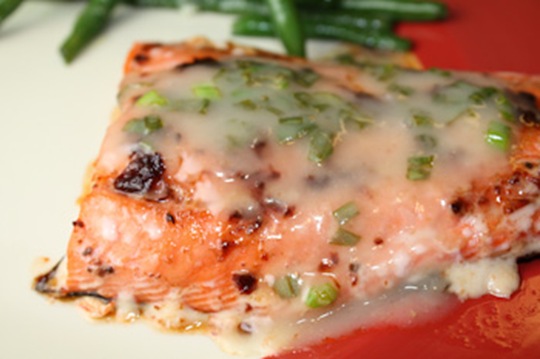
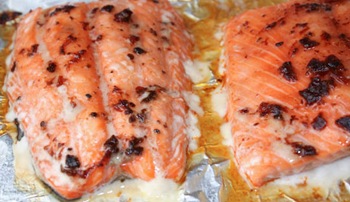
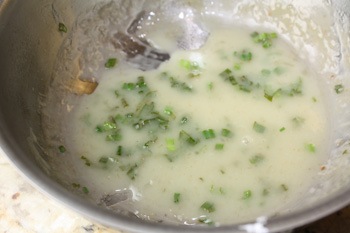
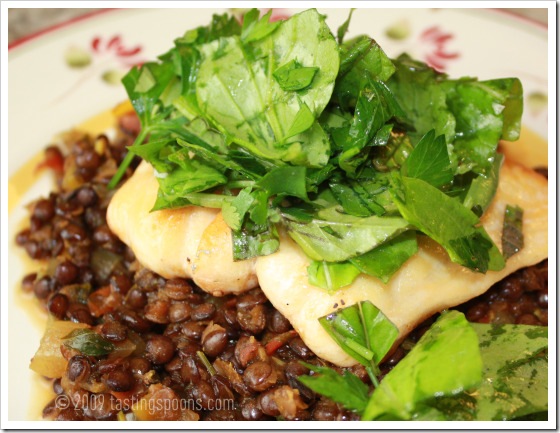
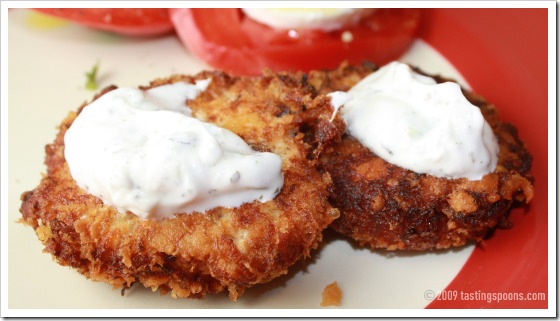
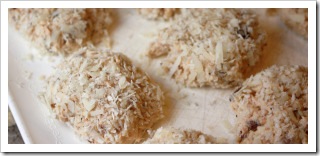
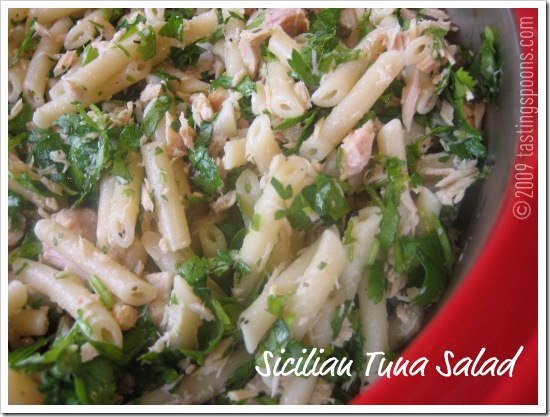
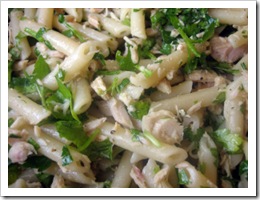
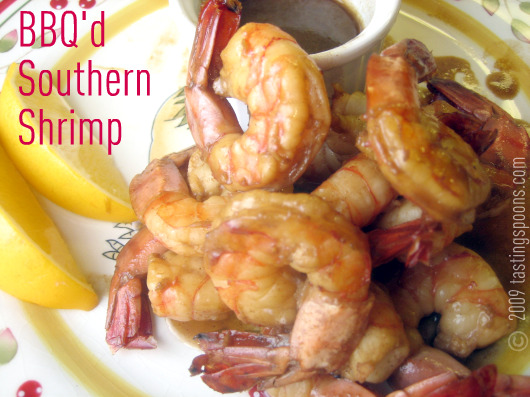
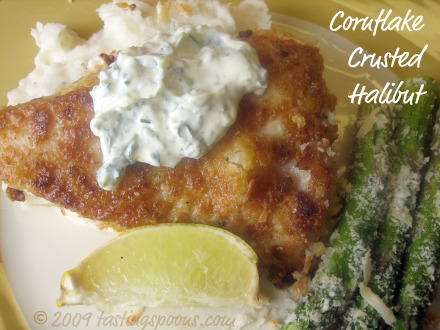
Leave a Comment!